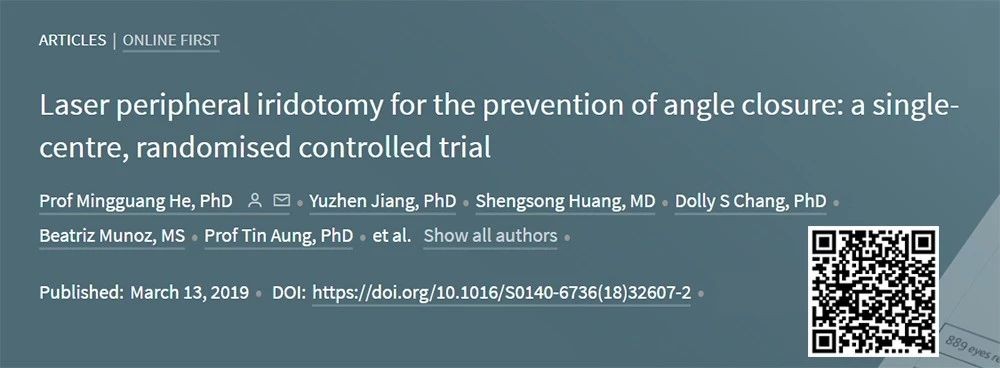The Lancet: widespread prophylactic laser peripheral iridotomy for primary angle-closure suspects not recommended --Prof Mingguang He et al’s Clinical Trial Findings Published in the Lancet
Reported by Office of International Cooperation & Exchange
Edited by Xianjing Wei
On March 13, 2019, the highly anticipated results of the Zhongshan Angle Closure Prevention (ZAP), a single centre, randomized controlled trial conducted in Zhongshan Ophthalmic Center, Sun Yat-sen University and collaboratively led by Prof Mingguang He, Prof Paul J Foster and Prof David S Friedman, were online published by one of the world’s most prestigious medical journal The Lancet (IF=53). The publication of these results marked a significant milestone in glaucoma research, and this original long article is by far the first from China’s ophthalmic community to have been published in The Lancet.
This milestone trial aimed to assess the efficacy of laser peripheral iridotomy (LPI) in preventing the development of primary angle closure (PAC) or acute angle closure in Chinese people with primary angle closure suspects (PACS). From June 2008 to December 2008, 889 PACS, all enrolled from a total of 11,991 screened individuals aged 50-70 years at a community-based screening in an urban district in Guangzhou, received LPI intervention in one randomly selected eye, with the other remaining untreated. Over the course of 72 months, treated eyes and contralateral controls were closely examined on follow-up visits 2 weeks, 6 months, 18 months, 36 months, 54 months, and 72 months after LPI, to observe the incidence of PAC by eyes by 72 months, defined as a composite endpoint of elevation of intraocular pressure, peripheral anterior synechiae, or acute angle-closure.
A small but statistically significant benefit was observed in LPI-treated eyes, with incidence of primary angle-closure disease in treated eyes of 4.19 cases per 1000 eye-years compared with 7.97 per 1000 eye-years in untreated eyes. However, the low incidence rate of visually threatening outcomes made it of limited benefits; researchers recommended against widespread prophylactic LPI in PACS identified through community-based screening.

